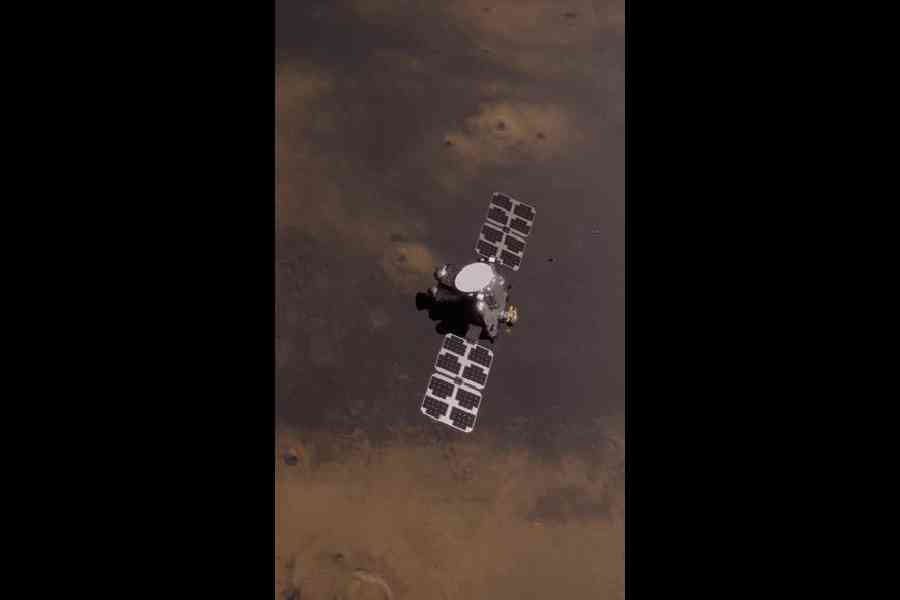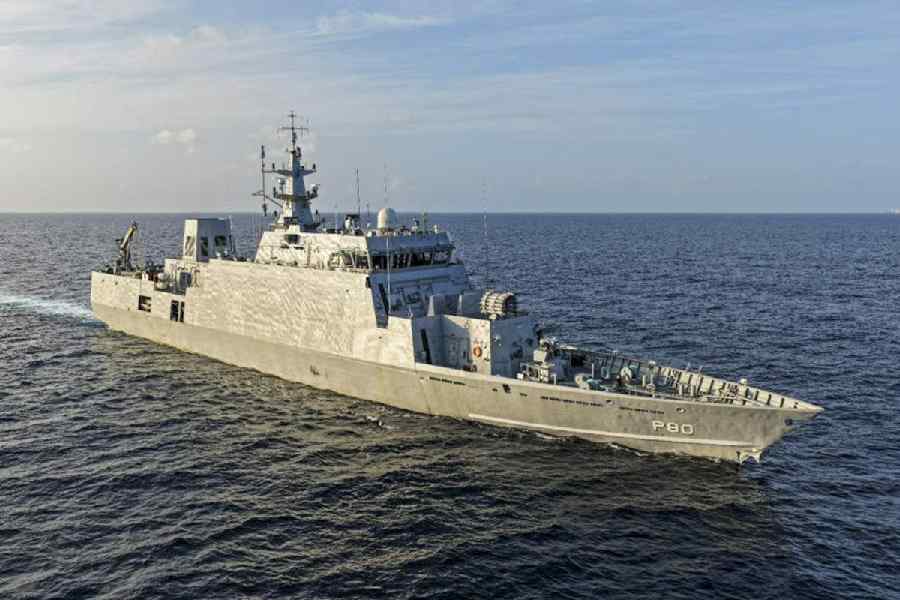Nasa’s most recent robotic mission to Mars, ESCAPADE, should perhaps have been named the Great Escape, given how many times it has eluded doom.
The data that the mission eventually collects will provide clues about why the Red Planet, which once possessed a thick atmosphere and flowing water on its surface, is today cold, dry and almost airless.
The mission, which launched last fortnight, could also serve as a “trailblazer” for how Nasa could get more bang for its buck from its science missions, said Rob Lillis, the mission’s principal investigator.
Nasa initially rejected Lillis’ proposal several years ago. Later, ESCAPADE — a shortening of escape and plasma acceleration and dynamics explorers — only got the go-ahead from Nasa because of a federal government shutdown in 2018.
And then it got kicked off its ride to space.
For all these troubles, the Space Sciences Laboratory at the University of California, Berkeley, US, which is leading the mission, and Rocket Lab of Long Beach, California, US, together delivered two identical spacecraft to the Kennedy Space Center in Florida last year — on time and on budget.
But the rocket that would eventually launch it — a brand-new design called New Glenn from Blue Origin — was not ready.
So the two spacecraft were shipped back to California and put in storage, and mission planners had to figure out yet another path to Mars.
This mission has nine lives, Lillis said, referring to the mythical resilience of cats. “It’s something we joke about on the team,” said Lillis, a planetary scientist at the Berkeley laboratory.
Just before the launch, though, there were a couple more minor delays.
Bad weather scuttled the first launch attempt. Then a second launch attempt was called off because of worries that a huge solar storm could scramble the spacecraft’s computers.
Blue and Gold — named after the Berkley school colours — are to enter orbit around Mars in September 2027. But because the sun will be inconveniently located between Earth and Mars at that time, blocking communications, the science mission won’t start until June 2028.
This is the first time that a mission to another planet has used multiple orbiters to make simultaneous measurements in different locations. The two spacecraft carry identical instruments — a magnetometer to measure the magnetic fields, a device called an electrostatic analyser that produces images showing the distribution of negatively charged electrons and positively charged protons and ions, and a probe that measures the temperature, density and voltage of the charged particles. Each also carries a camera built by students at Northern Arizona University in the US.
All of that came at a bargain-basement price tag of $94.2 million, which includes developing and building the spacecraft, launching them and operating them for the next few years.
That may sound like a lot, but travelling to another planet is not cheap. The last orbiter Nasa sent to the Red Planet — the Mars Atmosphere and Volatile Evolution mission, or MAVEN, which launched in 2013 — cost nearly $600 million.
Lillis proposed that ESCAPADE could join Psyche, a Nasa mission to explore a metal-rich asteroid, on its journey through the solar system. It did not look like a winning proposal at first. It seemed that Nasa would choose an orbiter that would travel to Venus. Then the federal government shut down in 2018.
That delayed decisions by several months. By the time Nasa finished its evaluations, there was not enough time for the proposed Venus orbiter to be ready and Nasa chose ESCAPADE.
There were more twists. After Nasa chose SpaceX’s Falcon Heavy rocket to launch Psyche, it moved the launch date ahead by one year. That powerful rocket also meant that Psyche no longer needed to swing past Mars for a gravitational boost on the way to the asteroid, and ESCAPADE no longer had a direct ride to Mars. The ESCAPADE team came up with an elaborate alternative. It failed a design review.
Nasa did throw the team a lifeline: it gave them nine months and $1.8 million to come up with another plan.
Instead of ESCAPADE hitching a ride with another spacecraft, Nasa said it would now buy a separate launch. But it would not say which rocket, and now the ESCAPADE spacecraft would have to propel themselves out of Earth orbit to Mars. The design they had could not do that. The spacecraft had to be bigger.
Nasa eventually selected New Glenn, which is almost comically oversized for ESCAPADE.
The two ESCAPADE spacecraft were completed in about three-and-a-half years, almost a sprint in the aerospace world, and Lillis proudly noted that Berkeley and Rocket Lab delivered them at a cost of $49 million.
That sprint was followed by another wait when New Glenn was not ready in time. And that created yet another challenge.
Earth and Mars come close to each other once every 26 months. ESCAPADE missed the window last year. One option would have been to wait until next year. But Jeffrey Parker, an orbital mechanics expert at Advanced Space in Westminster, Colorado, US, looked into other options.
“We studied no fewer than a dozen ways to get to Mars during 2025,” Parker said.
The two spacecraft, after their successful launch, are now on a trajectory calculated by Parker. They will travel along a kidney-bean-shaped orbit that loops around L2, a point in space where the gravitational forces of the sun and Earth balance. A year from now, they will swing around Earth again and fire their engines to head toward Mars.
NYTNS











